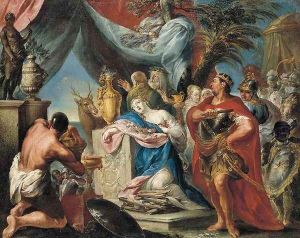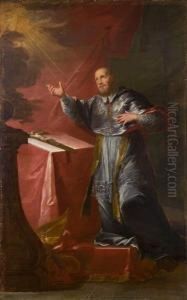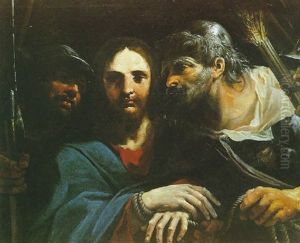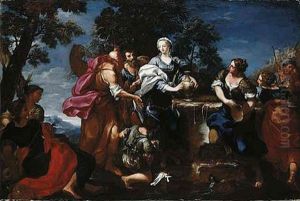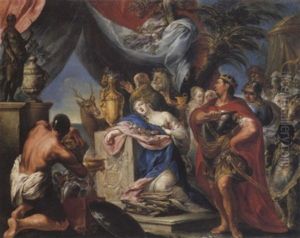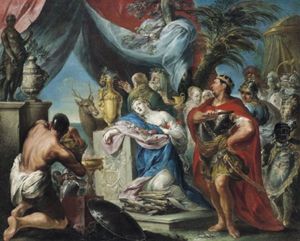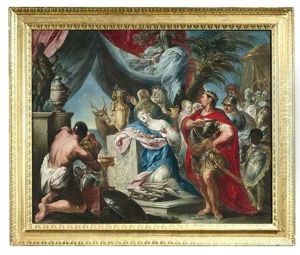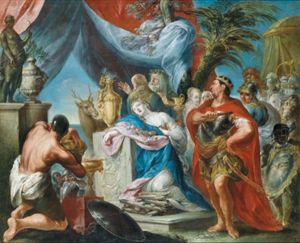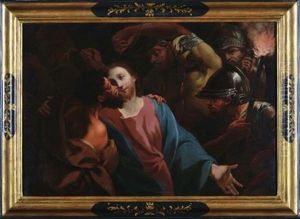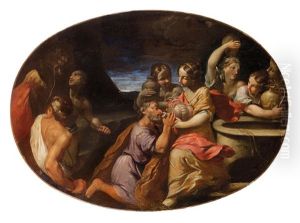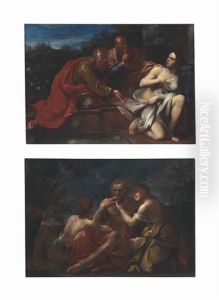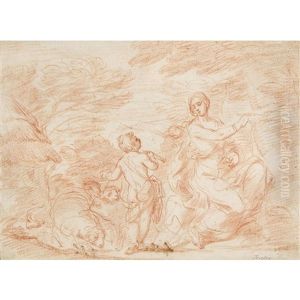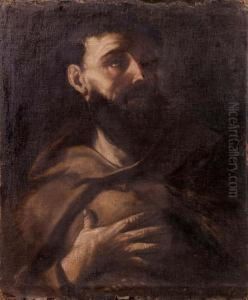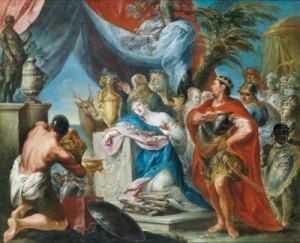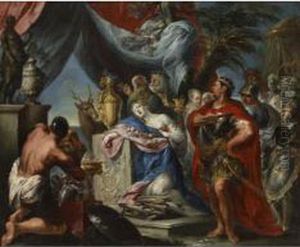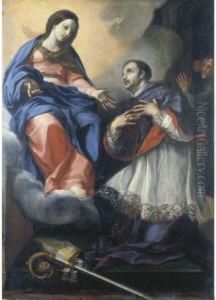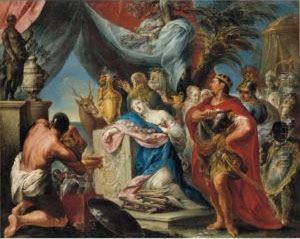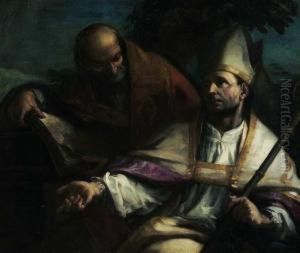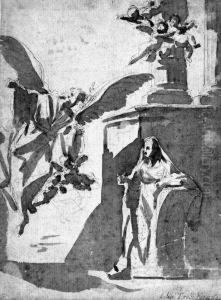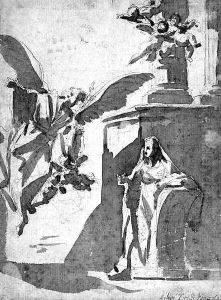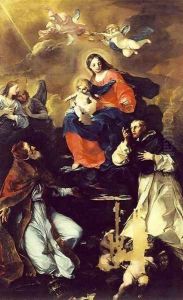Felice Torelli Paintings
Felice Torelli was an Italian painter, born in Verona in 1667. He was a prominent figure in the Baroque period, known for his dynamic and dramatic style, which was characteristic of the Baroque movement. Torelli's works are distinguished by their intense emotional expression, vibrant colors, and intricate details, which reflect the grandeur and exuberance of the Baroque era.
Torelli received his initial artistic training in his hometown of Verona. He was deeply influenced by the Veronese tradition, especially by the works of artists such as Paolo Veronese. However, Torelli's style also shows the influence of the Bolognese School, particularly the Carracci family, which he encountered during his travels in Italy. This blend of influences helped Torelli develop a unique artistic language that combined the elegance and clarity of the Veronese tradition with the dynamic compositions and emotional intensity of the Carracci.
Throughout his career, Torelli worked on numerous religious commissions, creating altarpieces, frescoes, and paintings for churches and cathedrals across Italy. His religious works are celebrated for their dramatic use of light and shadow, a technique that enhanced the spiritual and emotional impact of his scenes. Torelli's ability to convey the divine and the human with equal passion and intensity made his works particularly appealing to the religious institutions of his time.
Besides his religious art, Torelli also painted mythological scenes and portraits. His mythological paintings are noted for their imaginative compositions and the skillful rendering of the human figure, while his portraits are appreciated for their psychological depth and realism.
Felice Torelli's contribution to the Baroque movement was significant, not only in terms of his artistic output but also in his influence on younger artists. He was a respected teacher, and his studio in Verona became a center for artistic training. Among his students was his brother, Giuseppe Torelli, who would become a famous composer, indicating the creative environment that surrounded the Torelli family.
Torelli's legacy is preserved in the collections of major museums and galleries around the world, where his works continue to be admired for their beauty and emotional power. He died in Verona in 1748, leaving behind a body of work that remains a testament to the vitality and richness of the Baroque era.
